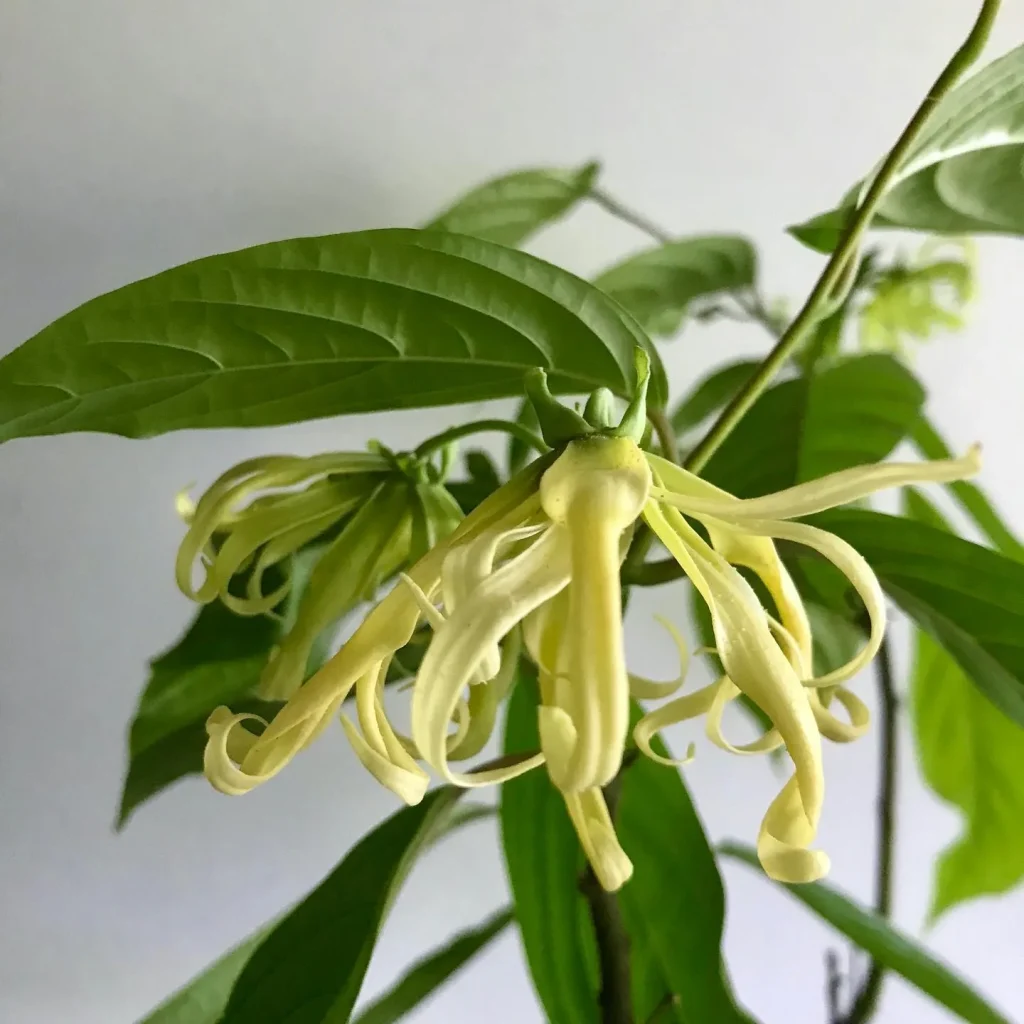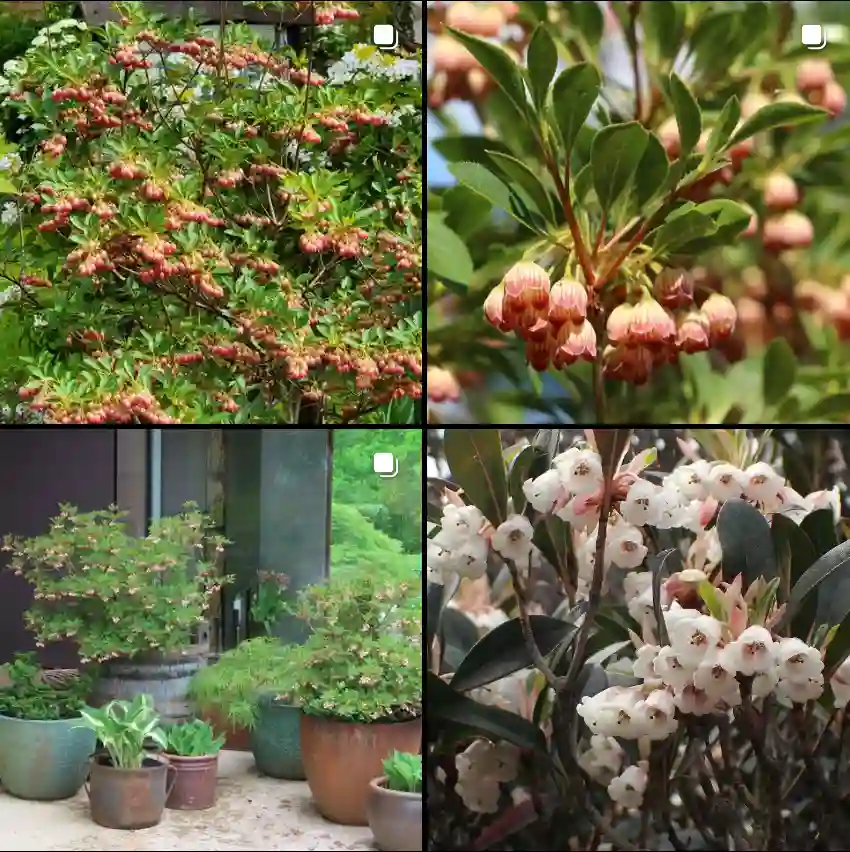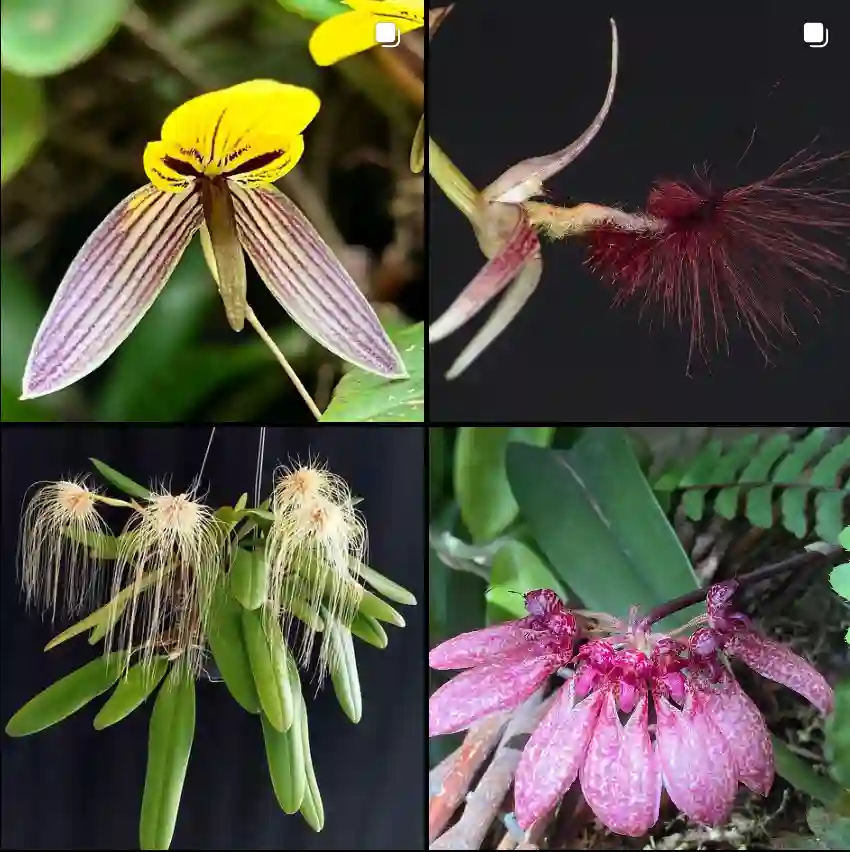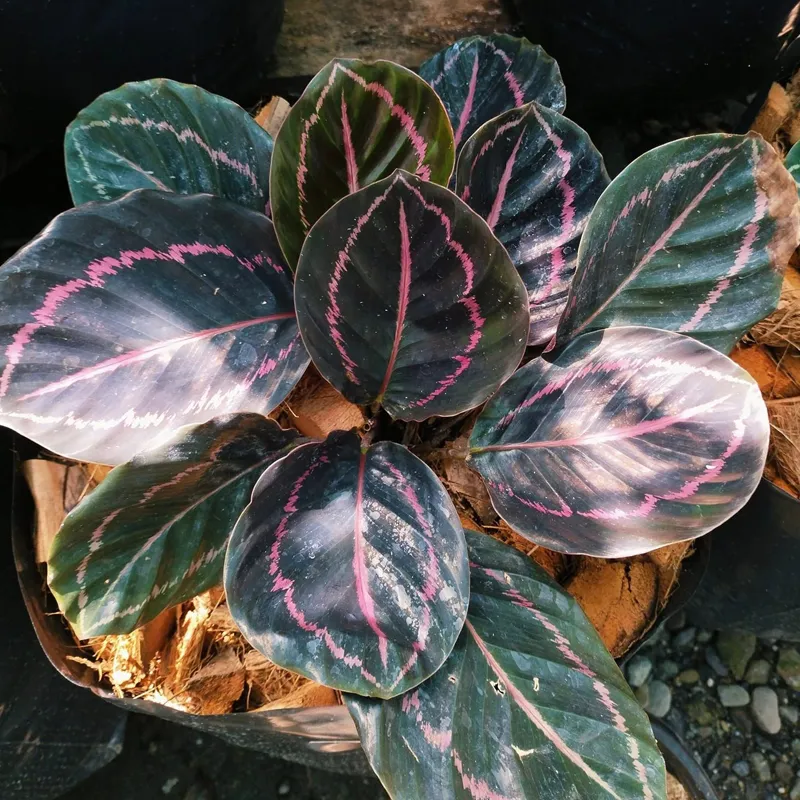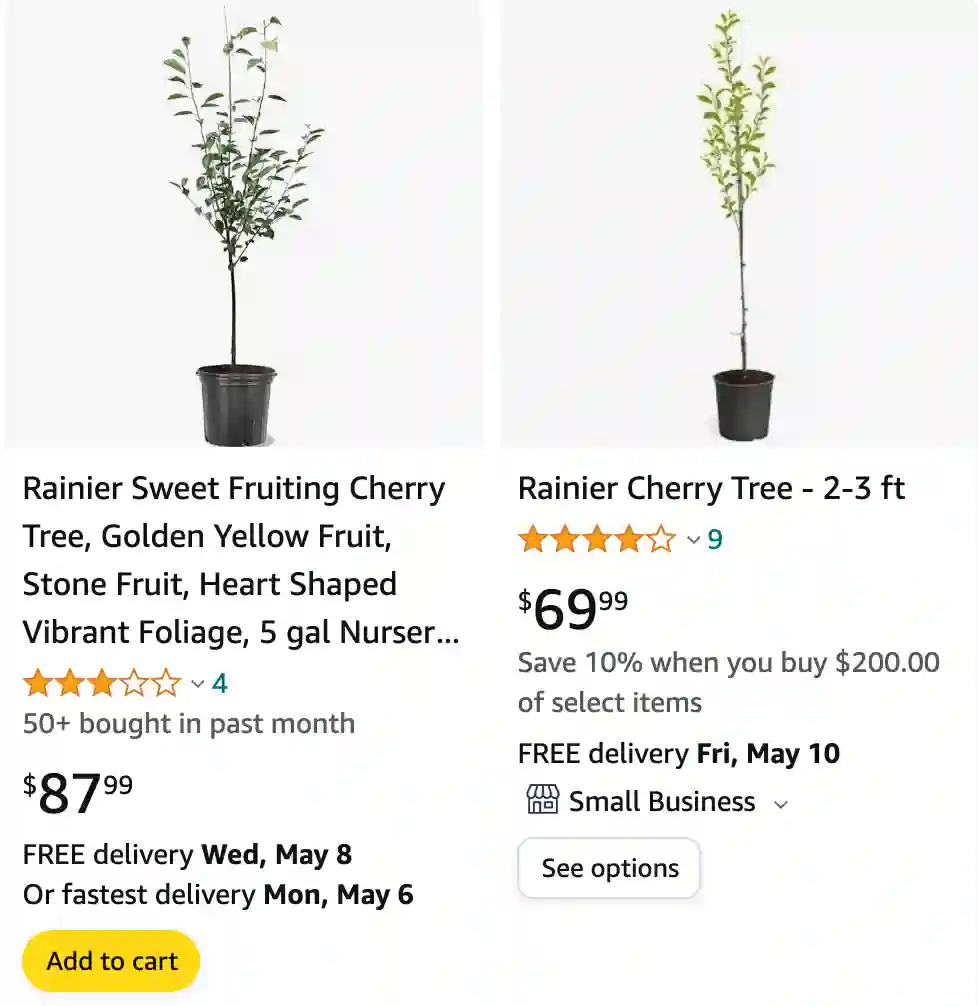
What are rainier cherries?
Rainier cherries are these sunshine-colored gems I look forward to every summer. They’re not quite yellow, but more like a pale gold with a blush of red on one side. Unlike regular cherries, they don’t stain your fingers when you pop one in your mouth, which is a huge bonus. But the best part is definitely the taste. They’re incredibly sweet, almost like biting into candy, but with a hint of floral flavor that makes them super refreshing. They’re not as tart as other cherries, which is perfect for me because I have a bit of a sweet tooth. They’re also on the bigger side, so you get a lot of juicy goodness in every bite. Rainier cherries are a bit more expensive than regular cherries, but I think they’re totally worth it for a special summer treat.
What color are rainier cherries?
Rainier cherries are these sunshine-colored gems I look forward to every summer. They’re not quite yellow, but more like a pale gold with a blush of red on one side. It almost reminds me of a sunrise caught on a cherry. Unlike regular cherries, they don’t stain your fingers when you pop one in your mouth, which is a huge bonus. But the best part is definitely the taste…
Are rainier cherries good for you?
Absolutely! Rainier cherries are like nature’s candy, but way better for you. They’re always a welcome sight at the farmer’s market because I know I’m getting a delicious treat that’s also good for my body. I can definitely feel the difference after a handful compared to sugary snacks. They leave me feeling energized, not sluggish, and I love knowing they’re packed with vitamins and antioxidants. Plus, they help keep me regular which is always a plus! So rainier cherries are a win-win for me – tasty and healthy!
Where are rainier cherries grown?
While I’ve seen Rainier cherries in stores across the country, I always try to snag them when I know they’re coming straight from the Pacific Northwest. Washington state seems to be where the magic happens – maybe it’s something about the fresh mountain air next to Mount Rainier, their namesake. I can just imagine the orchards bathed in sunshine, perfect for growing these little bursts of summer sweetness. I’ve heard they’re also grown in Oregon and even California, but for me, a Rainier cherry just tastes a little bit more special when I know it’s from its Washington homeland.
When are rainier cherries in season?
The wait for Rainier cherries is always agonizing for me! They’re kind of like a summer fashion statement – you only get a little window to enjoy them before they’re gone. Luckily, I’ve gotten pretty good at spotting them in stores. Here on the West Coast, I can usually snag some Rainiers in late May, but it feels more like a lucky find. The real season kicks in around June and lasts until maybe early July. Those few weeks are pure Rainier cherry bliss! It’s like a race against time to stock up and enjoy them before they disappear for another year. That’s why I always mark my calendar for National Rainier Cherry Day on July 11th – it’s a good reminder that the season is peaking and the best cherries are probably out there waiting to be devoured.
Are rainier cherries sweet? What do rainier cherries taste like?
Rainier cherries are definitely sweet tooths’ best friends! They’re even sweeter than the regular red cherries I usually get. Imagine biting into sunshine – that’s the kind of sweetness they have. But it’s not just a one-note sweetness. There’s a hint of floral perfume to them, almost like rosewater, which is really delicate and pleasant. And sometimes, I get a touch of peach flavor too, especially towards the end. It all adds up to a super refreshing and juicy taste that makes me want to pop one after another. They’re definitely my favorite summer treat!
Can dogs eat rainier cherries?
While I love sharing summer treats with my furry friend, Rainier cherries are a big no-no for dogs. It breaks my heart a little because I know how much he loves stealing a bite of my snacks, but it’s just not safe. The pit, stems, and leaves of all cherries, including Rainiers, contain something called cyanide which can be poisonous to dogs. Even a little bit can make them really sick. On top of that, the pit could cause a blockage in their intestines, which would be a whole other mess. So, as much as I’d love to see my pup’s happy face after a Rainier cherry, I stick to giving him dog-safe treats instead. There are plenty of yummy options out there that won’t make him sick, so we both get to enjoy our summer snacks safely!
Where to buy rainier cherries?
When I’m craving Rainier cherries, I usually start my search at local farmers’ markets or specialty grocery stores during the peak season, which is typically from late spring to early summer. There’s something about the atmosphere of a farmers’ market that adds to the experience of buying fresh produce, and I love supporting local growers whenever possible. I remember one summer day, stumbling upon a stand at the market overflowing with these golden beauties—I couldn’t resist picking up a big bag to enjoy at home. If the farmers’ market isn’t an option, I’ve also had luck finding Rainier cherries at larger grocery chains with well-stocked produce sections. It’s all about keeping an eye out for that perfect batch of sweet and juicy cherries!
How to pick rainier cherries?
Picking the perfect Rainier cherry is all about finding that sweet spot between ripe and delicious, without getting any bruised or underripe ones. Here’s what I’ve learned from my Rainier cherry picking adventures:
- Look for the sunshine glow: Since Rainiers aren’t bright red, you want a fruit with a golden yellow base blushed with a vibrant pink or red. This indicates full ripeness and maximum sweetness.
- The gentle tug test: The best Rainier cherry comes off the branch easily with a gentle tug. If you have to pull hard, it’s probably not quite ripe yet. Don’t yank on the stem though, as that can damage the fruit and shorten its shelf life.
- The firmness check: A perfectly ripe Rainier will be slightly soft but still firm to the touch. Avoid any cherries that feel mushy or wrinkled, as these are likely overripe and might have bruising inside.
- Pick with the stem on: Always pick your Rainier cherries with the stem attached. This helps to seal in the freshness and keep the fruit from drying out or getting moldy too quickly.
- Beware of hidden blemishes: Rainiers can be delicate, so gently inspect the fruit for any soft spots, bruises, or cracks before adding them to your basket.
With a little practice, you’ll be a Rainier cherry picking pro in no time! Remember, the goal is to find those sunshine-colored gems that are bursting with juicy sweetness.
Why are rainier cherries so expensive?
There are a couple reasons why Rainier cherries seem to have a price tag that shines as bright as the fruit itself. Here’s the scoop from my experience:
- Limited season, high demand: Rainier cherries are like fashionistas in the fruit world. They only grace us with their presence for a short window in the summer, typically June to July. This limited availability creates high demand, and you know what they say – limited supply often means higher prices.
- Picky about their home: These sunshine gems seem to thrive best in the Pacific Northwest, particularly Washington state. Growing conditions there must be just right for them, which means they can’t be easily cultivated everywhere. This regional limitation adds another layer to why they might cost a bit more.
- Delicate darlings: Rainier cherries are a bit more fragile than your average cherry. Their light-colored skin is prone to bruising, and they don’t have the longest shelf life. The extra care needed to grow, harvest, and transport them likely factors into the price tag.
- Worth the splurge? Absolutely! In my opinion, the taste and quality of Rainier cherries justify the extra cost. They’re a special summer treat – a burst of sunshine and sweetness that’s unlike any other cherry. So, while I might wince a little at the price tag sometimes, the flavor always wins me over.
How many calories in rainier cherries?
Rainier cherries are a sweet treat, but luckily they are also on the lower side when it comes to calories. One Rainier cherry has about 6 calories [1]. This means you can enjoy a handful without going overboard on your calorie intake for the day. Here’s a bit more info to consider:
- A typical serving of Rainier cherries is around 21 cherries, which comes in at around 90 calories [2]. This is still a pretty reasonable amount for a delicious and refreshing summer snack.
- Rainier cherries are naturally low in fat and protein, and most of their calories come from carbohydrates [3, 4]. However, they also contain fiber which helps you feel fuller for longer and can be beneficial for digestion [2].
Overall, Rainier cherries can be a guilt-free way to indulge your sweet tooth while still keeping an eye on your calorie intake.
Are rainier cherries good for diabetics?
Rainer cherries can be a good option for diabetics in moderation, but there are a few things to consider:
- Glycemic Index: They have a lower glycemic index (GI) compared to many other fruits [1]. The GI ranks how quickly foods raise blood sugar levels, and lower is better for diabetics. This means Rainier cherries are less likely to cause a spike in blood sugar.
- Natural Sugars: Rainier cherries do contain natural sugars, like fructose. While not as impactful as processed sugars, it’s still important to be mindful of portion sizes [2]. A small serving, like around 1/2 cup or 14 cherries, is generally recommended for diabetics.
- Fiber Factor: Rainier cherries are a good source of fiber, which helps with digestion and can also contribute to blood sugar management [3]. Fiber can slow down the absorption of sugar into the bloodstream, offering some additional benefit for diabetics.
- Talk to your doctor: Every diabetic situation is unique, so it’s important to talk to your doctor or a registered dietitian about incorporating Rainier cherries into your diet. They can advise you on a safe and appropriate serving size based on your individual needs and blood sugar management plan.
Overall, Rainier cherries can be a part of a healthy diabetic diet, but moderation and consulting with your doctor are key.
Can you freeze rainier cherries?
Absolutely! Freezing Rainier cherries is a fantastic way to enjoy their sunshine-y goodness all year round. Here’s why I love freezing them:
- Summer in December: Missing those bursts of sweet Rainier cherry flavor in the winter? No problem! Frozen Rainier cherries are the perfect way to bring back summer memories. Toss them into smoothies, yogurt parfaits, or even bake them into muffins for a taste of summer sunshine in the colder months.
- Convenience at its finest: Fresh Rainier cherries have a short season, but frozen ones can last for up to 6 months in your freezer [1]. This means you can stock up during peak season and have them on hand whenever you crave a sweet and refreshing treat.
- Preserves the good stuff: Freezing Rainier cherries is a great way to preserve their vitamins and antioxidants [2]. While freezing might break down some of the cell walls, most of the nutrients remain intact, making them a healthy frozen treat.
Here’s a quick tip: To prevent browning after they thaw, soak Rainier cherries in a lemon juice solution for 10 minutes before freezing [3]. This will help them retain their beautiful color and prevent them from looking mushy.
So next time you see Rainier cherries in season, consider grabbing a few extra pounds to freeze. Your taste buds (and future self) will thank you!
How to grow rainier cherries from seed?
Growing Rainier cherries from seed is a bit of a gamble, but it can be a fun experiment if you’re up for a challenge! Here’s the thing:
- Not guaranteed Rainier: Seeds from Rainier cherries won’t necessarily produce another Rainier cherry tree. Rainier cherries are a sweet mutation of another cherry variety, and seedlings tend to revert back to the original characteristics. You might end up with a tart cherry instead of the Rainier’s signature sweetness.
- Patience is key: It can take several years for a cherry tree grown from seed to produce fruit, and even then, it might take a few more tries before you get a decent harvest. Be prepared for the long haul!
But hey, if you’re up for the adventure, here’s a general roadmap for growing Rainier cherries from seed:
- Gather the pits: Enjoy some delicious Rainier cherries, then carefully remove the pits and clean any remaining fruit flesh.
- Stratification time: Rainier cherry seeds need a cold period to mimic winter conditions and stimulate germination. Place them in a moist paper towel or moss inside a sealed plastic bag and store them in your refrigerator for about 10 weeks.
- Planting time: Once the cold period is over, prepare small pots with well-draining potting mix. Plant a few pits per pot and keep the soil moist but not soggy. Place the pots in a sunny location.
- Germination and care: With some luck, you should see seedlings emerge in a few weeks. Thin the pots to the strongest seedling and continue to provide plenty of sunlight and water.
- Repotting and growth: As your cherry tree seedling grows, you’ll need to repot it into a larger container eventually. Be patient and provide proper care – it might take several years before it flowers and produces fruit.
There are many resources online that go into more detail about the specific steps for growing cherries from seed. Remember, it’s a long shot to get a true Rainier cherry this way, but it can be a fun experiment to see what kind of tree you end up with!
Are rainier cherries acidic?
Rainer cherries are known for being on the opposite end of the spectrum from acidic! They are actually quite sweet and have a very low acidity level. Here’s why:
- Sweet over tart: Compared to regular cherries, which can have a nice tart punch, Rainiers are much milder. They have a significantly lower amount of acid, making their sweetness the star of the show. This is why they taste almost like candy to me!
- Brix factor: Brix is a measurement of sugar content in fruit. Rainier cherries boast one of the highest Brix levels among sweet cherry varieties, ranging from 17 to 28 [1]. This high sugar content combined with low acidity is what creates their signature sweet and mellow flavor.
- Sunshine, not sour: Maybe it’s something about the growing conditions near Mount Rainier, but these sunshine-colored cherries seem to be all about sweetness. They lack the tartness that can sometimes come from higher acidity levels in other cherry varieties.
So, if you’re looking for a tart and tangy cherry experience, Rainiers might not be your pick. But if you crave a burst of sunshine-y sweetness, then these low-acid gems are definitely worth a try!
Are rainier cherries self pollinating?
Nope, Rainier cherries are not self-pollinating. This means they can’t produce fruit on their own like some other fruits. They need a little help from a friend in the pollination department! Here’s the breakdown:
- Self-incompatible: Rainiers are what gardeners call “self-incompatible.” The pollen they produce isn’t effective in fertilizing their own flowers. So even if a Rainier cherry tree is covered in beautiful blooms, it won’t set fruit without a compatible pollinator nearby.
- Pollination party: To get those Rainier cherries plump and juicy, they need pollen from a different sweet cherry variety that blooms at the same time. This cross-pollination is what fertilizes the flowers and allows the fruit to develop.
- Pollinator pals: There are several sweet cherry varieties that can be good pollinators for Rainier cherries, like Bing, Stella, or Sweetheart. Planting one of these beauties near your Rainier will increase your chances of a bountiful harvest.
While Rainier cherries might need a little help in the pollination department, the extra effort is definitely rewarded by their incredible sweetness and juicy goodness!
Can rainier cherries grow in Florida?
Raining cherries are not likely to thrive in Florida’s climate. Here’s why:
- Climate clash: Rainiers prefer cool climates with cold winters. Florida’s hot and humid environment just isn’t their jam. They need a period of chilling temperatures, around 45°F to 70°F for several weeks, to stimulate flower bud development. This simply doesn’t happen in Florida’s warm winters.
- Cherry no-go zone: The USDA Plant Hardiness Zone map places Florida in zones 9b to 11. Rainier cherries ideally grow in zones 5 to 8. This difference indicates they’re not suited for Florida’s subtropical climate.
- Fungal foes: The warm and humid conditions in Florida can also lead to fungal diseases that can be detrimental to cherry trees. Rainiers might be more susceptible to these issues compared to hardier varieties.
However, there is a glimmer of hope! There are a couple of alternatives you might explore:
- Try a different cherry: While Rainiers might be out, you could look into varieties like Barbados cherry or Cherry of the Rio Grande that are better suited to Florida’s climate. They might not be exactly the same, but they could still offer a sweet and delicious cherry experience.
- Container growing (with caution): If you’re really set on Rainiers, you could attempt to grow them in a large container. This way, you could provide a more controlled environment with cooler temperatures during winter. However, it would require a lot of effort, including bringing the container indoors or providing protection during colder spells.
Overall, while Rainiers are unlikely to flourish outdoors in Florida’s climate, there are alternative cherry options or even some creative container growing possibilities to consider.
If i die, water my plants!
